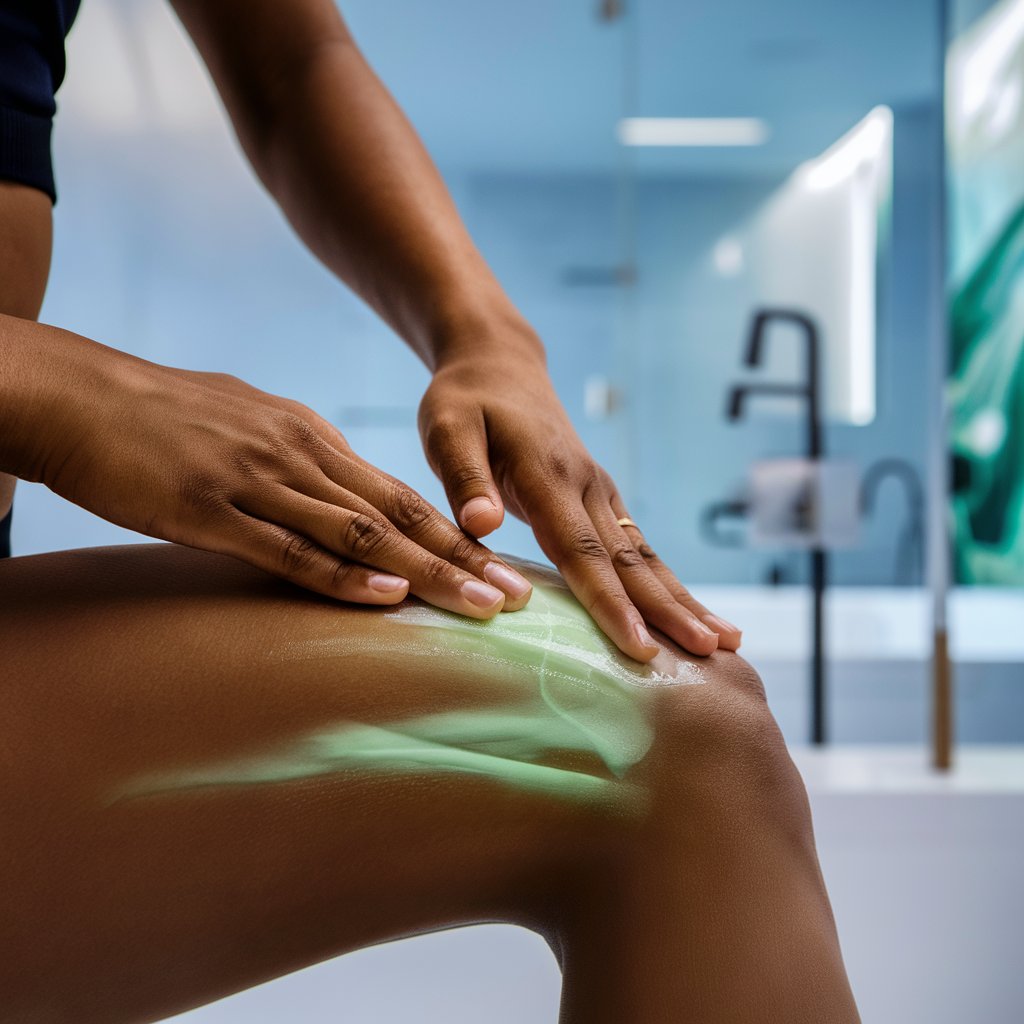Revitalize and Conquer: Muscle Recovery After Workout Insights
Unlock the secrets of muscle recovery after workout! Discover tips to revitalize your fitness journey.

Understanding Muscle Recovery
Why Muscle Recovery Matters
If you’re hitting the gym regularly or love pushing your body through physical activities, muscle recovery is a big deal. Skipping this crucial step means your muscles won’t get the chance to repair and grow stronger. Recovery helps maintain your performance levels, keeps injuries at bay, and ensures you keep smashing your fitness goals.
Think of muscle recovery as a recharge. It’s all about topping up your energy, fixing muscle fibers, and getting your body back in tip-top shape. If you brush it off, you might find yourself struggling with performance dips or picking up injuries more often. This becomes even more important as you hit your 30s, 40s, and 50s, when your muscles don’t bounce back like they used to. Want to dig deeper? Check out our article on post-workout muscle recovery.
The Stages of Muscle Recovery
Muscle recovery doesn’t just happen all at once. It’s like a phased operation where each stage plays a big part. Knowing these stages can help you tailor your recovery routine like a pro.
| Stage | What Happens | How Long It Lasts |
|---|---|---|
| Immediate Recovery | Kicks off right after you finish working out. Muscle repair starts, and inflammation sets in. | Up to 6 hours post-workout |
| Short-Term Recovery | Your body keeps repairing muscles and refilling energy stores. | 24-72 hours post-workout |
| Long-Term Recovery | This is where muscle growth and adaptation occur, making you stronger for future workouts. | Days to weeks post-workout |
Right after your workout, hydration and nutrition are key. Grabbing nutrient-rich snacks helps refill your glycogen stores fast. Need snack ideas? Check our list of muscle recovery foods.
During short-term recovery, it’s about ongoing muscle repair and fighting off soreness. Stretching and foam rolling can do wonders here. For tips on dealing with soreness, peek at our guide to delayed onset muscle soreness recovery.
Knowing the ins and outs of these stages means you can fine-tune your recovery strategy to fit your own fitness journey.
Tips for Faster Muscle Recovery
Building strong muscles isn’t just about the hours you put in at the gym. Recovering right is just as crucial. Follow these tips and you’ll notice a big difference in how you feel and how you perform.
Good Food and Staying Hydrated
Eating the right stuff is like adding fuel to a fire. Your body uses nutrients to fix muscles and refuel energy. And don’t skip on water—it helps move those nutrients around and keeps your body in check.
| Nutrient | Why You Need It | Where to Get It |
|---|---|---|
| Protein | Fixes muscle tears | Chicken, fish, beans |
| Carbs | Restores energy | Whole grains, fruits |
| Fats | Helps make hormones | Avocado, nuts |
| Water | Stops dehydration, supports recovery | Drinks, water |
Want the nitty-gritty? Check out our articles on muscle recovery foods and muscle recovery supplements.
Sleep Like a Log
Sleep is your best friend. Deep sleep helps your body release growth hormone, which is like magic for fixing muscles. Skipping out on sleep? Be ready for longer recovery times and slumpier gym sessions.
| Sleep Time | What It Does |
|---|---|
| 7-9 hours | Best for recovery and hormone release |
| Less than 6 hours | You’ll feel tired and off your game |
Need more convincing? Dive into post-workout muscle recovery to see why rest is king.

Keep Moving with Active Recovery
Active recovery is about moving, but not too hard. Gentle activities like walking, swimming, or easy cycling can actually work wonders for your muscles.
| Activity | Why It Rocks |
|---|---|
| Light Cardio | Boosts blood flow, delivers oxygen |
| Stretching | Loosens up tight muscles |
| Yoga | Zaps stress, aids relaxation |
Adding these into your fitness game can make a huge difference. Got sore muscles? Peek at our guide on delayed onset muscle soreness recovery for quick-relief tips.
So there you have it. Eat well, get your Z’s, and keep moving—even lightly. You’ll bounce back faster and hit those goals in no time. Happy lifting!
Recovering Smart After Your Workout
Alright, you’ve just had a killer workout. Now what? How do you bounce back like a champ? Let’s dive into some practical, no-fuss ways to help your muscles recover, cut down on soreness, and overall just feel human again.
Stretch it Out and Roll it Off
Stretching and foam rolling aren’t just fancy terms. These are your best friends post-workout. Stretching helps loosen up muscles that tighten during your routine, while foam rolling gets rid of those pesky knots and boosts blood flow.
Here’s a quick cheat sheet for how long you should be stretching and rolling, depending on how intense your workout was:
| Workout Intensity | Stretching Time (minutes) | Foam Rolling Time (minutes) |
|---|---|---|
| Low | 5 | 5 |
| Moderate | 10 | 10 |
| High | 15 | 15 |
Mix in both static stretches (where you hold a position) and dynamic stretches (moving through a range of motion) to keep things balanced. More tips on this? Check out our guide on post-workout muscle recovery.
Chill Out With Ice Baths and Contrast Therapy
Ice baths and contrast therapy might sound intense, but they work wonders. Ice baths cool you down fast, reducing inflammation by tightening up those blood vessels. Contrast therapy, switching between hot and cold water, gets your blood moving and helps you recover quicker.
Here’s the lowdown on how long to chill:
| Method | Recommended Duration |
|---|---|
| Ice Bath | 10-15 minutes (Start with 2-5 minutes) |
| Contrast Therapy | Cycle every 3 minutes between hot and cold for 20-30 minutes |
These methods will not only help cut down on muscle soreness but also prevent injuries. Need more deets on handling soreness? Our section on delayed onset muscle soreness recovery has you covered.

Massage and Compression – Beyond Relaxation
Getting a massage isn’t just a treat, it’s science. Massages relax tight muscles, boost blood flow, and cut soreness. Over time, they even improve flexibility and range of motion.
Compression garments, like tight sleeves or leggings, support your muscles and improve circulation, meaning less swelling and that heavy-leg feeling after intense sessions.
Here’s why you should be all over these:
| Practice | Benefits |
|---|---|
| Massage | Reduces soreness, promotes relaxation, boosts blood flow |
| Compression Garments | Improves circulation, supports muscles, reduces swelling |
Mixing these strategies – think stretching, ice baths, massages, and compression wear – can seriously up your recovery game. For more tips, check out our articles on muscle recovery supplements and muscle recovery foods.
Now go out there, hit those workouts hard, and recover like a pro!
Listen to Your Body
Tuning into what your body is telling you can make a world of difference in your fitness routine, especially when it comes to muscle recovery after a workout. By paying attention to these signals, you’ll know when to push harder and when to take it easy to avoid burnouts and setbacks.
Red Flags of Overtraining
Overtraining happens when you push your body beyond its limits without giving it enough time to bounce back. Spotting the signs early can save you from hitting a fitness wall. Common red flags include:
| Sign | What’s Happening |
|---|---|
| Fatigue | You’re feeling tired all the time, even after getting plenty of rest. |
| Decreased Performance | Your usual workouts feel tougher, and you’re not seeing the same results. |
| Persistent Muscle Soreness | Muscles are sore way longer than usual. |
| Mood Changes | You’re cranky, anxious, or experiencing mood swings. |
| Insomnia | Having trouble sleeping or waking up a lot during the night. |
| Frequent Illness | Catching colds or other bugs more often than usual. |
Keep an eye on these to tweak your training and recovery game. For more on handling muscle pain, check out our guide on delayed onset muscle soreness recovery.
Tweaking Your Workout Routine
Shuffling your workout routine here and there is key to letting your body heal and get stronger. Use these tactics to keep your fitness journey smooth:
| Change It Up | Why It Helps |
|---|---|
| Reduce Frequency | Cut down workout days each week for more rest and recovery. |
| Vary Intensity | Mix up light, moderate, and intense days to balance stress on your body. |
| Rest Days | Plan days off to give your muscles a break. |
| Switch Up Exercises | Try new moves to work different muscles and avoid overworking the same ones. |
| Active Recovery | Do low-key activities like walking or yoga to stay loose without overdoing it. |
These tweaks will help you strike a balance between pushing forward and giving your body what it needs to recover. For more good stuff on muscle recovery, don’t miss our article on post-workout muscle recovery.
Everyday Habits That Speed Up Recovery
Ever wonder why some people bounce back from workouts faster than others? Turns out, your daily habits play a big role in how well you recover. Let’s talk about how handling stress, cutting down on booze, and sticking to a routine can really help your muscles bounce back after hitting the gym.
Chill Out: Stress-Busting Tips
Stress is like a speed bump that slows down your recovery. When you’re stressed, your body pumps out cortisol, which messes with muscle healing. Here are some simple ways to chill out:
| Tip | How It Helps |
|---|---|
| Meditation | Clears your mind and cuts stress. A calm mind means faster recovery. |
| Deep Breathing | Easy breaths can seriously help you relax. |
| Yoga | Stretches your body and kicks stress to the curb. |
| Going Outside | Fresh air and sunlight can make you feel way better. |
Trying out these tips can help your body bounce back better, making your workouts more effective. Need healthy snack ideas? Check out our guide on muscle recovery foods.
Booze and Muscles: Not a Great Combo
Alcohol and muscle recovery don’t mix well. Drinking can mess up your body’s ability to fix itself. Here’s why:
| Problem | Explanation |
|---|---|
| Dehydration | Booze dries you out, which stinks for healing muscles. |
| Poor Protein Synthesis | Alcohol slows down your body’s muscle-building process. |
| Extra Soreness | Drinking can make post-workout aches worse. |
Cutting back on alcohol after working out can keep your recovery on track. Wanna learn more about handling muscle soreness? Dive into our article on delayed onset muscle soreness recovery.
Stick with It: The Power of Consistency
If you only work out when you feel like it, you’re not doing yourself any favors. Sticking to a regular workout routine helps your body get stronger and heal faster.
| Consistency Perks | How It Helps |
|---|---|
| Better Adaptation | Your body gets used to the grind and performs better. |
| Fewer Injuries | Regular workouts teach your body proper form, lowering injury risks. |
| Speedy Recovery | A steady routine helps your body get used to recovering quicker. |
Setting goals and sticking to a routine is key for fast recovery. Need more post-workout tips? Check out our article on post-workout muscle recovery.
Remember, you’re in charge of how well your body heals. By managing stress, watching your alcohol intake, and staying consistent, you’ll see better results in no time.

Get the Best Post-Workout Recovery Tips
Getting expert advice can turbocharge muscle recovery after working out. Whether you’re chatting with fitness trainers or physical therapists, you’ll get tips tailored just for you.
Hitting Up a Fitness Trainer
Grabbing a session with a fitness trainer comes with some real perks, especially fitting those recovery hacks into your routine. They’ll give you the lowdown on how fit you are and whip up custom workout plans that help you hit your goals. Plus, they’ll keep tabs on your progress to make sure you’re not slacking or overdoing it.
Fitness trainers are big on recovery techniques. They’ll guide you on warm-ups and cool-downs so your muscles don’t freak out and pull a fast one on you. Check out what fitness trainers have in store to help those muscles bounce back:
| Service | What You Get |
|---|---|
| Custom Workout Plans | Plans that consider how you recover and your fitness level. |
| Recovery Techniques | Tips for stretching, foam rolling, and staying active. |
| Tracking Progress | Regular check-ins to tweak your training based on your recovery. |
For those keen on post-workout muscle recovery, find a top-notch trainer who gets the drill.
Powering Through with Physical Therapy
Physical therapists are lifesavers when it comes to fixing injuries and speeding up recovery. They’re all about making personalized rehab plans for anyone dealing with stubborn pain or soreness. With targeted exercises, they help you get stronger and bounce back quicker.
If you’ve got injuries or that annoying chronic pain, physical therapy is where it’s at. Here’s how physical therapists do their magic:
| What They Do | How They Help |
|---|---|
| Injury Check | Figure out what’s wrong to make the perfect recovery plan. |
| Custom Recovery Plans | Building specific exercises that are safe and effective. |
| Pain Relievers | Using tools like ultrasound or electrical waves to ease pain. |
Anyone struggling with muscle soreness, like delayed onset muscle soreness recovery, can see big improvements with a physical therapist’s guidance.
All in all, both fitness trainers and physical therapists are key to speeding up muscle recovery après workout. Their know-how can craft better recovery methods leading to a fitter and stronger you!

